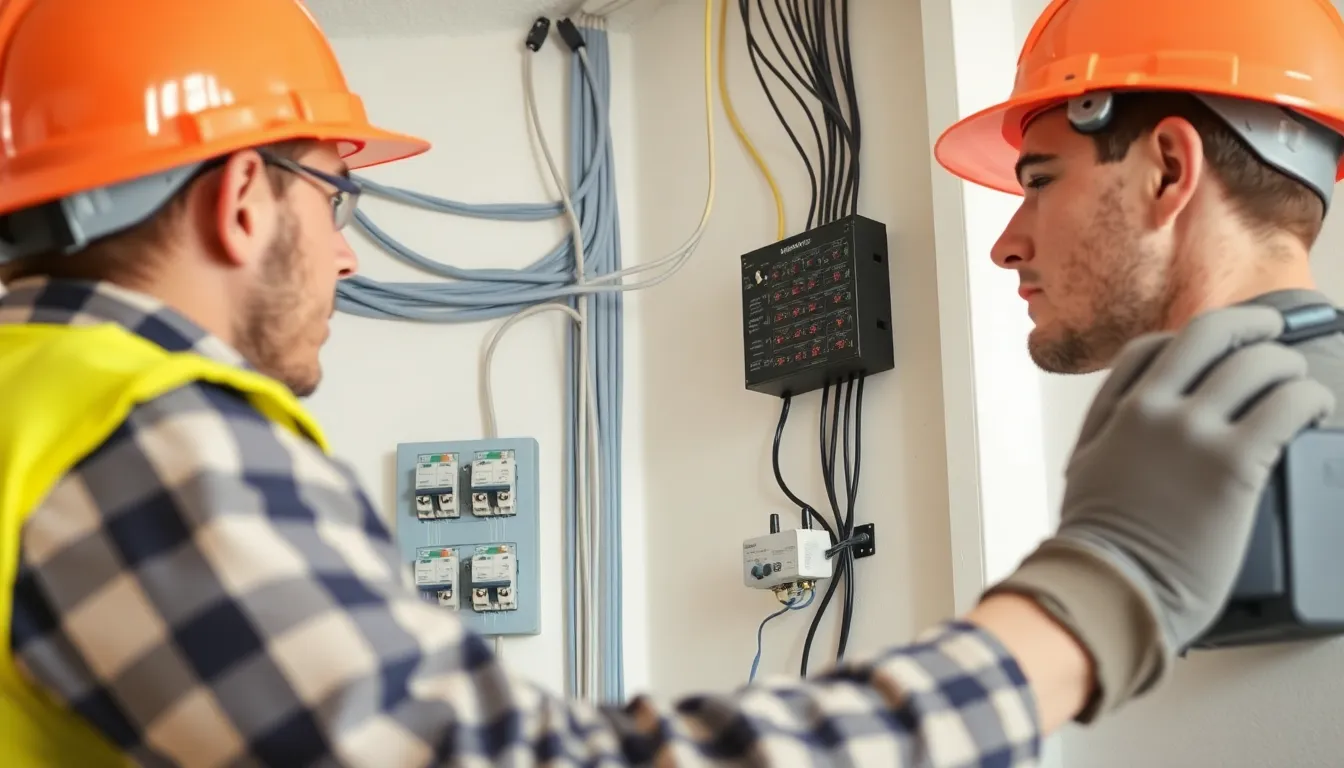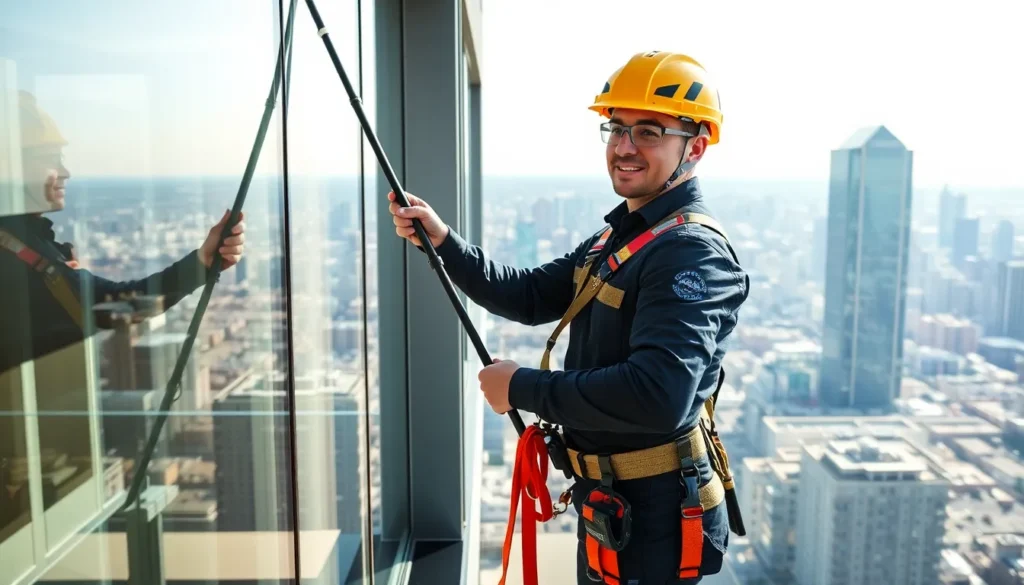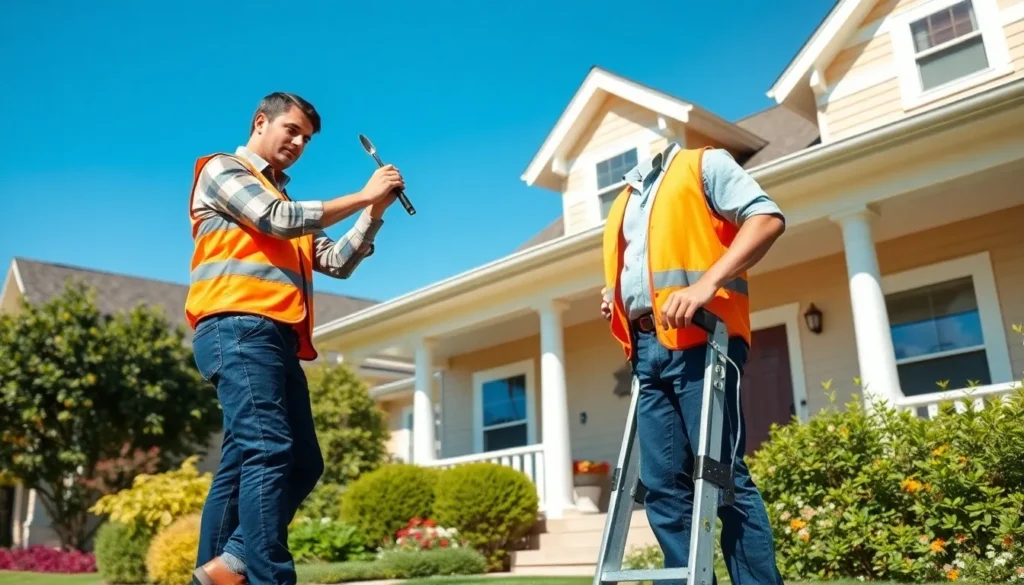Upgrading wiring in a home or business is more than just a technical necessity; it’s a crucial step toward safety and efficiency. As technology advances, the demand for reliable electrical systems grows. Outdated wiring can lead to serious hazards like electrical fires or equipment malfunctions, making upgrades essential for peace of mind.
In today’s world, where energy efficiency and smart home devices are on the rise, ensuring that wiring meets modern standards is vital. A wiring upgrade not only enhances safety but also improves the overall functionality of electrical systems. Whether it’s for an old property or a new construction, understanding the benefits and process of wiring upgrades can empower property owners to make informed decisions.
Table of Contents
ToggleOverview of Wiring Upgrade
Upgrading wiring serves multiple essential purposes in residential and commercial settings. First, modern wiring accommodates increased electrical demand from contemporary appliances and technology. Outdated systems often struggle to power numerous devices safely, leading to potential overloads.
Second, safety enhancements are a key benefit of wiring upgrades. Older wiring can deteriorate, resulting in risks like electrical fires, shock hazards, and system failures. By replacing aged wires with current materials and standards, property owners significantly reduce these dangers.
Third, energy efficiency improves with upgraded wiring. Newer electrical systems support energy-saving appliances and smart technologies. Properties with modernized wiring often experience lower electricity bills due to optimized energy consumption.
Fourth, functionality elevates through wiring upgrades. Implementing state-of-the-art electrical infrastructure enhances user convenience, enabling features such as better lighting, advanced climate control, and smart home integration.
Fifth, property value increases after a wiring upgrade. Prospective buyers often prioritize updated electrical systems, understanding their role in long-term safety and efficiency.
Wiring upgrades provide crucial safety, efficiency, and functionality advantages, making them vital for any property owner.
Benefits of Wiring Upgrade

Upgrading wiring provides multiple advantages that significantly impact safety and efficiency in properties. The following subsections detail these key benefits.
Increased Efficiency
Increased efficiency stems from modern wiring’s ability to handle higher electrical loads. Contemporary appliances demand more energy, and updated wiring accommodates this requirement without risk. Enhanced wiring systems enable quicker data transfer, which boosts performance in smart home technologies. Properties with upgraded wiring experience reduced energy losses through improved conductivity. This efficiency translates to lower electricity bills, benefiting homeowners and business operators.
Enhanced Safety
Enhanced safety is a primary benefit of wiring upgrades. Older wiring systems often pose hazards such as short circuits and electrical fires. Modern wiring incorporates better insulation materials and advanced circuit breakers, minimizing these risks. Regular inspections follow upgrades, ensuring systems operate within safe parameters. According to the National Fire Protection Association, wiring improvements have significantly decreased the rate of electrical fires in recent years. Upgrading wiring not only protects property but also safeguards the occupants inside.
Types of Wiring Upgrades
Wiring upgrades vary based on the application and specific needs of a property. Two primary types include residential wiring upgrades and commercial wiring upgrades.
Residential Wiring Upgrades
Residential wiring upgrades involve updating the electrical systems in homes to accommodate modern technology and safety standards. Key components include:
- Service Panel Replacement: Replacing outdated panels with higher-capacity units enhances power distribution for new appliances and devices.
- Circuit Additions: Adding circuits prevents overloads, ensuring safety and functionality for various areas like kitchens and home offices.
- Rewiring: Rewiring old homes with modern materials improves safety and compliance with current building codes, reducing electrical fire risks.
- Smart Home Integration: Installing wiring for smart devices enables seamless automation and security, aligning with the growing demand for connected living spaces.
Commercial Wiring Upgrades
Commercial wiring upgrades focus on improving electrical systems in businesses and industrial settings. These upgrades prioritize efficiency, safety, and scalability. Important elements include:
- Load Analysis: Evaluating current power needs ensures that wiring systems can support the demands of equipment and machinery without risk of failure.
- Data and Communications Wiring: Installing structured cabling supports high-speed internet, data transfer, and communication systems essential for modern businesses.
- Energy-Efficient Lighting: Upgrading to LED and smart lighting systems reduces energy consumption while enhancing the workspace environment.
- Emergency Systems: Implementing updated fire alarms, emergency lighting, and backup power solutions ensures compliance with safety regulations and protects personnel.
Each type of wiring upgrade serves distinct purposes while contributing significantly to overall safety and efficiency in both residential and commercial properties.
Considerations for Wiring Upgrade
Wiring upgrades involve several critical factors that affect decisions and planning. Understanding these considerations ensures a successful upgrade process.
Cost Factors
Cost factors play a significant role in wiring upgrades. Several elements influence pricing:
- Materials: Copper wiring costs between $2.50 and $3.50 per foot. Aluminum, while cheaper, requires more care in installation and may need larger gauge wire due to its higher resistance.
- Labor: Hiring licensed electricians typically costs $50 to $100 per hour. Labor expenses vary based on complexity and time required for installation.
- Permits: Local regulations might necessitate permits. Permit fees range from $50 to $500, depending on the jurisdiction and project scope.
- Upgrades: Additional expenses can arise from replacing panels or circuit breakers. Smart home integration may increase costs due to specialized equipment.
Budgeting effectively for all these factors ensures a comprehensive approach to wiring upgrades.
Compliance with Codes and Standards
Compliance with codes and standards is crucial during wiring upgrades. Standards ensure safety and functionality:
- National Electrical Code (NEC): Following the NEC guidelines is essential for electrical safety. Local jurisdictions often adopt these codes, affecting upgrade requirements.
- Building Codes: Local building codes dictate wiring methods and materials. Compliance mitigates risks and ensures installations meet safety regulations.
- Inspections: After upgrades, local authorities may require inspections to confirm adherence to codes. Passing inspections verifies installation quality and safety.
Being aware of compliance requirements helps prevent legal issues and enhances safety in electrical systems.
Upgrading wiring is a crucial investment for any property owner. It not only enhances safety but also improves energy efficiency and functionality. By addressing outdated systems, property owners can significantly reduce risks associated with electrical hazards.
Modern wiring accommodates the demands of today’s technology while increasing property value, making it a wise choice for both residential and commercial spaces. Prioritizing these upgrades ensures compliance with safety standards and prepares properties for future electrical needs.
Embracing a wiring upgrade can lead to long-term benefits, providing peace of mind and a more efficient living or working environment.









